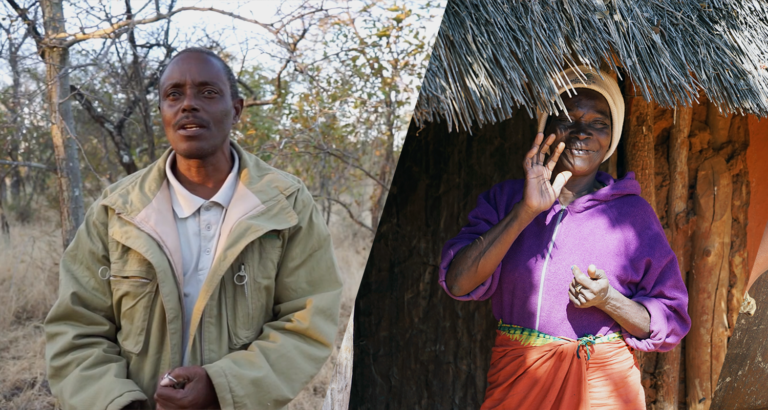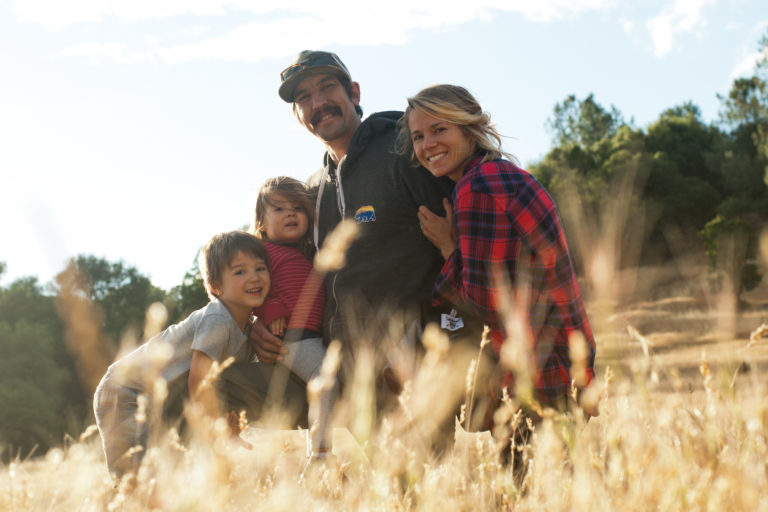Dumfries Campaign for Wool Conference. Sept 2016.
I am indeed honoured to be asked join you here today and to talk about a grave situation of great concern to all thinking people around the world. I must say amongst so many people from the fashion industry I do feel right out of my environment. Normally I am barefoot in the African bush where I live much of the time in our mud and grass huts. Our staff there did urge me to at least put on socks and I have done that and more as you see.
I will talk about new insights in management and science of past half century that are vital to all we hold dear. These concern why it is we can put a man on the moon but we cannot solve the greatest problem on Earth – agriculture destroying many civilizations regionally over centuries and now posing a global threat to mankind on this Earth- -our only home.
All of you know about global problems too well for me to need to elaborate – in summary culminating in global scale desertification and climate change and the many symptoms of such massive environmental degradation – increasing droughts and floods, poverty, social/political breakdown, recruitment to rogue religious and other violent groups, mass emigration changing the face of Europe and more.
As you know, we blame two things mostly for desertification and climate change – fossil resources (coal, oil, gas) and livestock (sheep, goats, cattle mainly).
Humanity will need fossil resources to produce many products for thousands of years to come and livestock, as I will explain, are the only thing that can save civilization as we know it. Commonsense should tell us that resources cannot cause any problem – only the management of those resources can do that. But we persist in blaming resources. I am reminded of was it Promethius in one of Longfellow’s poems who said “Whom the gods would destroy they first make mad!”
It is through management that we choose to call coal, oil and gas fossil fuels and burn them and make textiles at an obscene rate for short-term profit. It is management that leads to livestock in factory production causing grave health, environmental and economic problems. It is management of livestock that leads to desertification.
Biological problems.
Global desertification and climate change are essentially biological problems requiring biological solutions in both management and policies. However mainstream institutional scientists, media and public are placing total faith in technological solutions.
Desertification and climate change are inseparable. And agriculture – which is not by the way crop production but is the production of food and fibre from the world’s land and waters — is almost certainly a larger and more dangerous contributor to climate change than the mismanagement of fossil resources. This we see with very conservative estimates of over 75 Billion tons of soil loss annually (more than 10 tons per human alive – or 20 times as much as the food needed to support a human) – with Billions of hectares of the world’s grasslands burning annually and Millions of hectares of tropical and other forests burning as well as global desertification and the loss of most higher ocean life – all due to agriculture.
Agriculture in its broadest sense is without question the most destructive and extractive industry of mankind – more so than all mining and other extractive industries.
What is more – in a post fossil fuel world – agriculture will continue to cause desertification and climate change. And unless we correct this situation we will not have the slightest chance of removing and storing excessive carbon and other atmospheric pollutants in the only safe place possible – regenerating soils. All this I believe is unarguable – but few indeed are even talking about it.
For management to take place two components are inescapable.
• Making decisions that lead to management or policy actions.
• Using some “tool” with which to manage our environment.
Today I do not have time to talk about making management decisions and developing policies holistically as there is only time to talk about the vital but second issue most blocking progress – the tools at our disposal.
We are a tool-using animal. You cannot even drink water today without using technology unless you go to the nearest river and drink.
The public, and thus institutional belief, is that we have a great many tools and options. This is simply not true as I will explain.
For over two million years our ancestors had technology – sticks and stones used as tools but we could not influence our environment any more than other tool-using apes.
Within last half million years we learned to make and use fire as a tool – we began changing the face of entire continents and entered the copper, bronze and iron ages enabling us to advance our technology and grow it exponentially as we are doing today.
Look around you now – everything you see, including the clothes you are wearing, was made possible by the use of fire advancing technology.
For 99.9% of human history only two tools – technology and fire.
Easy to see why humanity believes technology will ride to our rescue. At end of last Millenium many leading thinkers and scientists were interviewed and I read all I could – every single eminent scientist interviewed said we would solve our problems using advancing technology.
When Sir Richard Branson and Al Gore announced their Virgin Earth Challenge and prize for any scientist coming up with a solution to climate change and sequestering the legacy load of atmospheric carbon some 2,600 applied. All but one offered a technological solution.
While only technology can enable us to develop benign forms of mass energy to replace fossil fuels frankly no technology even imaginable in science fiction can address the biological problem of global desertification and its role in climate change – nor store the bulk of excess atmospheric gases in the only safe place – the world’s regenerating soils.
So if technology cannot do what is required what else is there?
Resting the environment (conservation).
We can rest the environment from human actions and disturbance to allow it to restore itself – commonly called conservation and not rest. This is being widely advocated by the world’s major environmental organizations and that is why in a TED Talk on desertification I showed this picture.

We have two broad and very different terrestrial environments –
Areas mainly green enjoying relatively high humidity throughout the year – and not desertifying no matter what we do.
Areas mainly brown enjoying seasonal humidity interspersed with dry times and all desertifying to various levels.
Conservation, or resting the environment, to allow recovery is the most powerful tool we have in the smaller green areas and the oceans. However that same management action is one of the most destructive actions we can take in the vast brown areas (two thirds of the world’s land roughly).
That again is why I showed this land in the United States managed by the US National Parks service. Rested entirely for over half a century and despite vast expenditure in soil conservation measures it is turning to desert as badly as any land in Africa.

I could equally as well have shown dozens of research plots totally rested to “prove” removing livestock would regenerate the land and all desertifying, or this Aldo Leopold Memorial Forest along the Rio Grande river


I have just come from Africa to join you. There I am surrounded by large national parks and hunting areas and the worst loss of biodiversity – truly alarming – is occurring in our national parks in Botswana, Zimbabwe and Zambia under today’s policies of major environmental organizations and governments. What works well in near perennial humidity has the opposite effect over most of the world’s land.
So what else might we do facing the gravest dangers ever?
We can plant plant trees, shrubs or grasses using technology. This we have tried with repeated failure for centuries. I used to fly visiting scientists in my plane in the United States low level over vast areas of failed plantings by the US government. And in the United Arab Emirates they have spent over $30 Billion planting trees and irrigating them as you see – all failing to even slow the desert advance.

Green wall to hold back Sahara.
International institutions are calling for a green wall across Africa south of the Sahara and spending millions of dollars on it – That will fail because desertification is already well advanced thousands of miles south of it.
So now what else are we to do? I loved Churchill’s quip – if something has to be done and all your experts explain why it cannot be done it is easy. Change your experts and do it!
Of the tools mankind has to manage our environment and save civilization – Technology — Fire — Resting the environment – planting trees — none address the cause of desertification, biomass burning or agriculture’s role in changing our climate and thus none can succeed. It is plain commonsense that we have to address the cause of a problem to have any chance of success. And two of these tools – Fire and resting the environment – cause biodiversity loss, desertification and climate change over most of the worlds land.
While many including eminent scientists have ridiculed and criticized for over fifty years – none have answered the question – what else can humans possibly do facing greater danger than all wars ever fought?
So lets look at what we can do based on counter-intuitive new insights –
Earlier people gave us glimmerings of a solution:
• Scottish shepherds who talked of the “golden hooves of their sheep”
• Navajo medicine men who when the US government shot thousands of their sheep warned that there was a relationship between the hooves of the sheep and the health of the land
• Early Dutch farmers in S. Africa who had a saying “Hammer veld to sweeten it”
• Sir Albert Howard who wrote so powerfully about how essential animals were to crop production.
In the 1950s my friend and mentor Sir Frank Fraser-Darling spent 6 weeks with me in Africa and thankfully pointed my nose at the soil – he even left me his personal copy of Sir John Russell’s Soil Conditions and Plant Growth. – that I treasure to this day.
Over all of the world’s land soil, soil life, animals and plants co-evolved together. All one synergistic whole in our holistic world.
For life to flourish a cycle of birth, growth, death and decay is essential. None of us thought to look at the decay part of this cycle.
NASA world view repeat
In the green areas with almost perennial humidity in the past and today although large herbivores were present, most herbivores were insects and decay is unstoppable no matter how we manage.
In the larger brown areas with marked seasonal humid and dry periods most herbivores were large animals in vast herds accompanied by pack-hunting predators and their presence was essential to the decay process in annually dying grass plants – the moisture and micro-organisms of decay were in the gut of animals. Not only was this essential to the health of the soil but so too was the grazing, trampling, dunging and urinating of the animals.
This is why I said so emphatically that no technology even imaginable could reverse desertification – today only livestock properly managed can do what is required to scale and with the frequency required. Nothing but livestock can now save civilization as we know it.
When I realized in the 1960s that we would have to rethink the role of livestock I faced a dilemma. How could we possibly manage them to reverse desertification?
Pastoralist practices.
10,000 years of extremely knowledgeable pastoralists herding their animals had led to the vast deserts of antiquity – and to this day pastoralists continue to advance desertification.
Modern range management.
We had enjoyed about a century of modern range science and management – but that had accelerated desertification as we first detected in Africa and confirmed in the United States.
The French scientist Andre Voisin had established that overgrazing was not due to animal numbers as we believed, but due to time of exposure and re-exposure of plants to grazing animals. And he had given us a clue that some form of planning process was needed to replace historical and modern grazing practices.
This was a management and not a scientific problem – and we ecologists and biologists had never been involved in planning anything as complex as we faced. So I looked at other professions to see if any had. The only profession that had dealt with complicated constantly changing conditions was the military profession. And they had over centuries developed simple planning processes for immediate battlefield situations that could be rapidly taught in times of war.
As an officer in the Royal Rhodesia Regiment I simply took the centuries of experience embodied in Sandhurst training and modified their process to deal with the even greater complexity of agriculture and running livestock over months of changing weather and other difficulties. This worked immediately and has never failed us for half a century. It is in fact so easy we can and have trained people to do it in a day.

Results – show sheep in Argentina and land in Zimbabwe
From the recent documentary on the grasslands of the world by National Geographic/PBS ” The message is an extraordinarily powerful one, and it could be the best thing, the absolute best thing that conservation has ever discovered.”
“In a million years, I never thought that cows could be so beneficial for the wildlife I love . . . As an ecologist I was taught that people, and especially their livestock, are the enemy of wildlife, but my journey from Africa to the Arctic to here in Montana, is forcing me to rethink everything I know about conservation.”
Dr M.Sanjayan Senior Scientist The Nature Conservany.
Let me now conclude.
What I have talked about goes against the beliefs of society and thus of our many institutions developing policies that govern our fate.
Research by Lord Eric Ashby throws light on how truly new insights gain acceptance in democratic societies using Britain and America as his case study over 200 years. And he concluded new counter-intuitive insights only come in when public opinion shifts and not before. I can find no case in history from Galilleo on in which there has been institutional change ahead of a shift in public opinion when counter- intuitive, paradigm-shifting insights are involved.
Tragically as we struggle to get information to the public literally hundreds of celebrities with great wealth and influence are funding and supporting the anti livestock vegetarian movement. Unknowingly they are endangering all of humanity.
I do not believe there is any possibility of leadership emerging from politicians, corporations, universities or environmental organizations. Leadership can only come from us the likes of people in this room – I do not exaggerate when I state that individually and collectively the future of your children, grandchildren and humanity depends on your ability to shift public opinion in our hour of need.
Management and policy need to be holistic and livestock properly managed are essential to saving civilization as we know it. Two simple ideas that make sense to anyone given some level of understanding – but that are opposed by institutions today controlling our fate.
As successful leading figures I do not need to spell out to you what you can do – you with your experience will run ahead of me. But I can mention three useful actions:
• Open all the doors you can to enable strategic talks – like this one – fund and support independent writers, artists, documentary productions and more – supporting the people who do get new knowledge into society.
• Use influence to bring about Parliamentary or Congressional Enquiry into agriculture and the science behind it (look at the enquiries and what we spent on bank bailouts – far less serious)
• Support financially and in all ways you can including joining the global movement of Holistic Management hubs around the world – places where amazing people are now getting together showing what can be done – all coordinated and collaborating through our institute. (Thankfully the first university led hub has formed in Michigan).
Your wool industry – at all levels along the production and marketing chain – needs to be heavily involved as key players and leaders, as are all farmers, ranchers and pastoralists. You, more than generals or presidents, hold the future of humanity in your hands.
Collectively and individually you have more powerful influence than perhaps you realize – use it.
I appeal to you on behalf of millions without voices in the vast desertifying world across North Africa and up into China – to take the high ground morally, scientifically and philosophically – I have long thought life like a game of cricket – we do our best for our team but at some point each of us is bowled, caught, stumped LBW or run out and our innings is over. So step up to the crease and score as you never have before in the best innings of your life for team humanity during the remainder of your innings. I am in the departure lounge with my innings almost over.
Thank you once again for the honour of joining your gathering and talking to you today.





